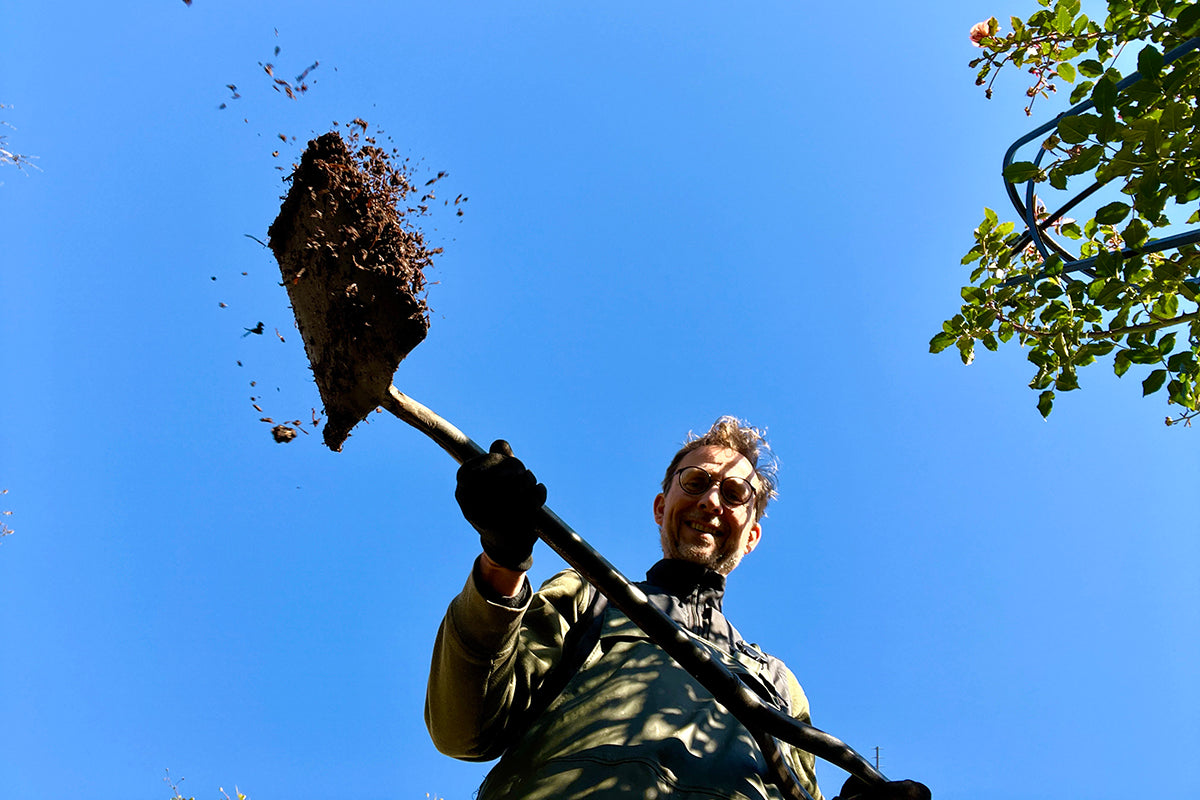Soil transformation

Last week we talked about cutting back the borders and planting them up for a much needed injection of spring colour. Wallfowers, foxgloves, and tulips were planted and now mulching has started in earnest (picture).
In previous years we’ve used a mix of our own compost, leaf-mould, and coarse sand but, after a decade of including the sand, we have decided that enough has been introduced and are now leaving it out of the mix.
Mulching has been transformative for our soil. It has improved drainage, fed the soil flora and fauna, and has in turn given us healthy disease resistant plants. It makes what was once a sticky and wet clay soil far easier to work making it a joy to move plants around or add new specimens.
We planted a new rose this week too. Our newly created border, previously the site of a large overgrown Lonicera hedge, is taking shape. Located on the northern side of the cottage we thought we’d inject a bit of light into the area by having a predominantly white border. The rose, a Mme Hardy from David Austin, should add perfectly to the design.







